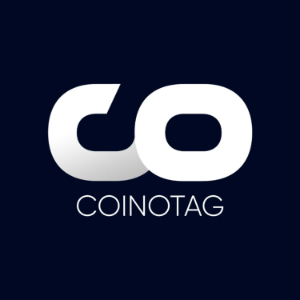Digital Asset Investment Products Witness Astounding $2.7B Inflows, Fueling Crypto Market Optimism
7 min read
BitcoinWorld Digital Asset Investment Products Witness Astounding $2.7B Inflows, Fueling Crypto Market Optimism The world of digital assets is buzzing with incredible news! Imagine a floodgate opening, and instead of water, it’s billions of dollars pouring into the cryptocurrency space. That’s precisely the picture painted by the latest data, which shows digital asset investment products experiencing an astonishing combined inflow of $2.7 billion last week alone. This isn’t just a one-off event; it marks the 11th consecutive week of net inflows, accumulating to a monumental nearly $17.8 billion for the first half of the year. This surge is a powerful testament to growing institutional and mainstream confidence in the crypto market. Unpacking the Latest CoinShares Report: A Glimpse into Institutional Confidence The source of this fascinating data is the CoinShares Digital Asset Fund Flows Weekly Report, a highly respected and closely watched publication in the cryptocurrency investment community. CoinShares is a leading digital asset investment firm, and their reports provide invaluable insights into how institutional money is moving within the crypto ecosystem. Their latest report highlights a consistent trend: smart money is increasingly finding its way into regulated and accessible crypto investment vehicles. What makes this particular report so compelling? It’s the sheer scale and consistency of the inflows. Eleven consecutive weeks of net positive flows indicate a sustained interest, rather than a fleeting speculative burst. This continuous accumulation of capital suggests that institutional investors are not just dipping their toes in the water; they are actively allocating significant portions of their portfolios to digital assets. This steady stream of investment provides a strong foundation for market stability and future growth, moving beyond the often-volatile retail-driven cycles. What Are Digital Asset Investment Products and Why Do They Matter? When we talk about digital asset investment products , we’re primarily referring to regulated financial instruments that allow investors to gain exposure to cryptocurrencies without directly holding the underlying assets. These can include: Exchange-Traded Products (ETPs) and Exchange-Traded Funds (ETFs): These are publicly traded funds that hold cryptocurrencies, offering investors an easy way to buy and sell exposure on traditional stock exchanges. The recent approval of spot Bitcoin ETFs in the U.S. is a prime example of how these products open doors for a wider range of investors. Trusts: Similar to ETFs but often with different redemption mechanisms and fee structures, such as Grayscale Bitcoin Trust (GBTC). Other Structured Products: These can include notes, certificates, or other derivatives that track the performance of digital assets. These products are crucial because they bridge the gap between traditional finance and the nascent crypto market. For institutional investors, pension funds, wealth managers, and even retail investors seeking a more regulated path, these products offer: Regulatory Clarity: They operate within established financial frameworks, providing a sense of security. Accessibility: Investors can buy and sell them through traditional brokerage accounts. Diversification: They offer a way to diversify portfolios with a new asset class. Reduced Operational Complexity: Investors don’t have to worry about self-custody, private keys, or security risks associated with holding actual cryptocurrencies. The substantial inflows into these products underscore a maturing market where sophisticated investors are increasingly comfortable with the asset class, viewing it as a legitimate component of a diversified portfolio. Bitcoin’s Dominance: What’s Driving These Massive Bitcoin Inflows? Unsurprisingly, Bitcoin inflows led the charge, capturing a staggering $2.224 billion of the total. This consistent preference for Bitcoin isn’t new, but its magnitude in recent weeks is particularly noteworthy. Several factors contribute to Bitcoin’s continued dominance in the institutional investment landscape: Spot Bitcoin ETF Success: The launch of spot Bitcoin ETFs in the United States earlier this year has been a game-changer. These ETFs provide a highly liquid, regulated, and easily accessible avenue for institutional capital. The daily trading volumes and net inflows into these ETFs have consistently broken records, validating the immense pent-up demand. ‘Digital Gold’ Narrative: Bitcoin continues to solidify its position as a digital store of value, often compared to gold. In an environment of economic uncertainty, inflation concerns, and geopolitical tensions, investors are increasingly looking for uncorrelated assets that can preserve wealth. Halving Event Impact: The recent Bitcoin halving event, which reduced the supply of new Bitcoin entering the market, often precedes periods of price appreciation. While not an immediate price catalyst, it reinforces Bitcoin’s scarcity and long-term value proposition, attracting long-term holders. Macroeconomic Tailwinds: Expectations of potential interest rate cuts by central banks, coupled with a general risk-on sentiment in broader financial markets, can also encourage investors to seek higher returns in assets like Bitcoin. These combined factors create a powerful narrative for Bitcoin as a robust and increasingly mainstream asset, making it the primary choice for institutional entry into the digital asset space. Ethereum’s Resurgence: Are Ethereum Inflows Signalling a New Era? While Bitcoin commanded the lion’s share, Ethereum inflows also saw a significant surge, recording $429.1 million. This strong performance for the second-largest cryptocurrency by market capitalization suggests a growing interest in the broader smart contract platform ecosystem. Ethereum’s appeal stems from several key areas: Potential Spot Ethereum ETFs: The recent regulatory developments surrounding potential spot Ethereum ETFs in the U.S. have ignited significant optimism. While not yet launched, the anticipation alone has driven considerable capital into Ethereum-related products, as investors position themselves for future accessibility. Ecosystem Growth: Ethereum remains the backbone of the decentralized finance (DeFi) sector, non-fungible tokens (NFTs), and a vast array of decentralized applications (DApps). Its robust developer community and continuous innovation make it a compelling long-term investment. Staking Yields: With Ethereum’s transition to Proof-of-Stake (PoS) and the ability to stake ETH for yield, it offers an attractive income-generating opportunity for institutional investors, adding another layer of utility beyond simple price appreciation. Scalability and Upgrades: Ongoing developments like the Dencun upgrade aim to improve Ethereum’s scalability and efficiency, addressing past concerns and paving the way for wider enterprise adoption. The substantial inflows into Ethereum highlight a growing recognition of its fundamental value and its critical role in the evolution of Web3, positioning it as a strong contender for diversified digital asset portfolios. Broader Crypto Market Trends: What Do These Inflows Mean for the Future? The sustained and substantial inflows into digital asset investment products are not just isolated events for Bitcoin and Ethereum; they are indicative of broader crypto market trends . This consistent capital injection signals a fundamental shift in how traditional finance views cryptocurrencies. Here’s what these trends imply: Benefits for Investors and the Ecosystem: Increased Legitimacy: Large institutional inflows lend credibility to the crypto market, helping to dispel doubts and foster wider acceptance. Enhanced Liquidity: More capital entering the market generally leads to deeper liquidity, which can reduce volatility and make large trades less impactful on price. Broader Investor Base: The accessibility of these products allows a new segment of investors, previously hesitant due to complexity or regulatory concerns, to participate. Innovation and Development: Increased capital can fuel further investment in blockchain technology, driving innovation in areas like scalability, security, and new applications. Potential Challenges and Considerations: Market Volatility: While institutional money can stabilize, the crypto market remains inherently volatile. Large inflows can also be followed by large outflows, leading to price swings. Regulatory Uncertainty: Despite progress, the global regulatory landscape for digital assets is still evolving. Unexpected policy changes could impact investor sentiment. Market Concentration: A significant portion of inflows still concentrates on Bitcoin and Ethereum, potentially leaving other promising altcoins less exposed to institutional capital. Macroeconomic Headwinds: Broader economic downturns or shifts in interest rate policies could still influence investor appetite for riskier assets like cryptocurrencies. Actionable Insights for the Savvy Investor: For individuals and institutions alike, these trends offer valuable insights: Monitor Institutional Flows: Keeping an eye on reports like those from CoinShares can provide early signals about market sentiment and potential price movements. Understand Diversification: While Bitcoin and Ethereum dominate, exploring other digital assets with strong fundamentals and innovative use cases can offer diversification benefits. Long-Term Perspective: The consistent inflows suggest a growing long-term confidence in digital assets as a legitimate asset class, encouraging a patient, strategic investment approach. Risk Management is Key: Despite the positive outlook, the crypto market is not without risks. Employing sound risk management strategies, such as setting stop-losses and only investing what you can afford to lose, remains paramount. The monumental $2.7 billion inflow last week, contributing to nearly $17.8 billion in the first half of the year, is a powerful indicator of the escalating institutional adoption and maturation of the digital asset market. Led by Bitcoin and Ethereum, these sustained inflows reflect a growing confidence in cryptocurrencies as a legitimate and valuable asset class. As the bridge between traditional finance and digital assets continues to strengthen through innovative investment products, the future of the crypto market appears increasingly robust and optimistic. This isn’t just about price action; it’s about the fundamental shift in how the financial world perceives and integrates this revolutionary technology. To learn more about the latest crypto market trends, explore our article on key developments shaping Bitcoin and Ethereum institutional adoption. This post Digital Asset Investment Products Witness Astounding $2.7B Inflows, Fueling Crypto Market Optimism first appeared on BitcoinWorld and is written by Editorial Team

Source: Bitcoin World



